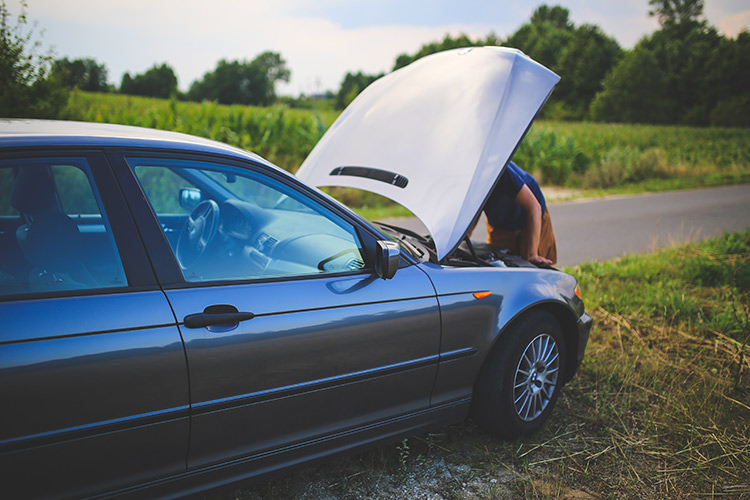Put Together a Emergency Kit for Your Vehicle
September is Preparedness Month. Each September, National Preparedness Month encourages and reminds Americans to be prepared for disasters or emergencies in their homes, businesses, and communities. We thought we would add emergency preparedness for vehicular emergencies as well. When it comes to commuting or traveling long distances, a roadside emergency kit can mean the difference between getting back on the road and being stranded for hours. It’s the one item every vehicle should have. And yet, most of us don’t carry the basic items to help us get back on the road quickly and safely.
When assembling your roadside emergency kit, keep in mind that it should be designed to the age and condition of your vehicle, your driving location and the weather. Here in the temperate southeast we have different needs than our Northern friends or those out West or even inland.
Jumper Cables
One of the best things you can carry in your a roadside emergency kit is a good set of jumper cables. Don’t skimp on these. Spend the extra 10-20 bucks and go for a six gauge cable, substantial connectors and at least 12 feet of length — the more the better. 16 feet is ideal for most situations. Also, having jumper cables handy allows you to be someone’s hero of the hour when they are in need.
Battery Charger
If you have an older car, a mobile battery charger can be a game changer. Forget the hassle of jumper cables. Get a jump-start with a compact charger that can renew your battery via the car’s cigarette lighter or a direct jump.
Flashlight
You can research Incandescent vs. LED all day, but get something bright that works. We like LED because it can potentially last longer than an incandescent and will keep running even as the batteries get depleted. Plus, LEDs last nearly forever and there’s no bulb to have to worry about changing. An LED headlamp is a good investment as well.
Spare Tire
The most common vehicle problem is a flat tire. Check your spare periodically to ensure it’s properly inflated and there’s no cracking in the rubber. Generally, a spare tire is only good for about five years before the rubber starts to deteriorate. This is especially important if your spare is under the vehicle and exposed to elements. Also, the spare tire area can be a place where water collects when car gutters systems get clogged by leaves, oak seeds and dirt. Take it from us, a once or twice a year inspection can find possible water intrusion before it becomes an issue.
Jack / Tire Iron
It would seem obvious, but hopefully the jack and tire iron that came stock with your vehicle are still in it. If not, you will need to address that immediately. A working jack and tire iron are key to successfully changing a tire, so make sure your jack is lubricated and functioning.
Simple Tool Kit
Including a simple tool kit in your vehicle is always a great idea. At the very least, you should have the tools necessary to replace your battery, zip ties and duct tape. For a super simple vehicle tool kit, check out this post for a basic car toolkit.
Emergency Signaling Device / Markers
The purpose of an emergency signaling device is to alert oncoming traffic to your presence on the side of the road and can also be used as a distress signal in an emergency. Road Flares are good to have and if if you are truly stranded, also be used to start a fire. Alternatively you can also have collapsible reflective items in your kit. A flag is always handy as well for when you end up hauling oversized items around.
Extra Food and Water
It may be planning for the absolute worst, but having more water around than less is never a bad thing. If you have a child that is going off to college and driving home on weekends or holidays, an energy bar or two in the kit couldn’t hurt either.
Blanket
It’s smart to pack a wool blanket and maybe some chemical warm packs, too. It does not get terribly cold here in the South but if you find yourself on the road side on a chilly January night you will be happy you have a blanket in your vehicle.
First Aid Kit
There are variety of First Aid Kits available on Amazon that come in small, zippered packages that can fit in glove compartment and other storage areas. Have the basics on hand. Toss in some nausea medication and pain relievers too.
Rescue Tool
The primary purpose of a tool like this is escaping from a vehicle, which in the event your vehicles takes a dive into a body of water. It can also be used for rescuing others that could be trapped, or need to be pulled through a window to escape a vehicle. Look for one that breaks glass and can cut a seat belt.
Knife / Multi-Tool
A sharpened pocket knife. Everyone should have one on them or at the least in your tool kit or glove box. A multi-tool, such as a Leatherman, is also a great device to keep in the glove box or console for easy access for quick fixes. Don’t forget a tire gauge either.
Most of these roadside emergency kit items can be packed in a small tool box and stored in your trunk or cargo area ready to use but with any luck, never needed.










